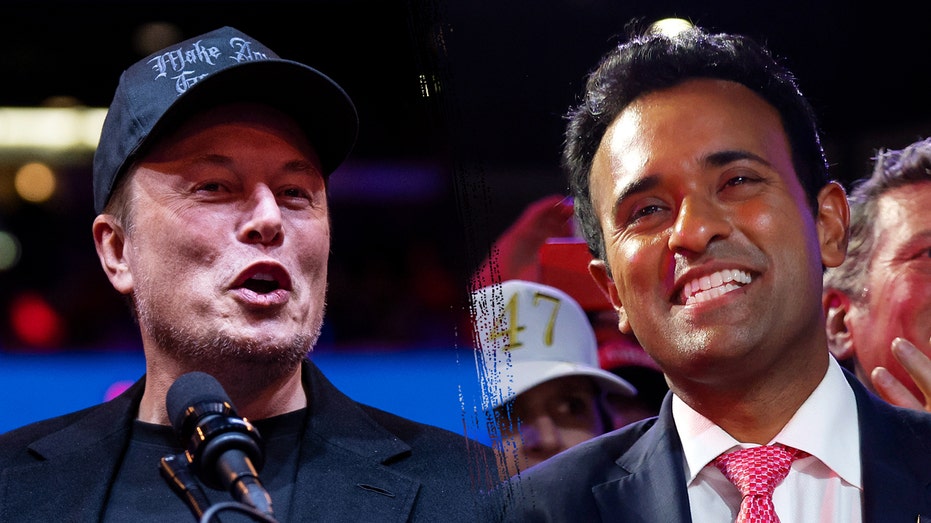
Not least of those challenges will be laying off of federal employees. “These two wonderful Americans will pave the way for my administration to dismantle government bureaucracy, slash excess regulations, cut wasteful expenditures, and restructure federal agencies,” Trump said. Approximately 4,000 members of the federal workforce are political appointees.
Of these, 1,200 are Presidential Appointment with Senate Confirmation (PAS) employees—as the name implies, employees who require Senate confirmation. “Most executive branch officials that are politically appointed are cleanly and clearly, uncontroversially removable at will by the President,” Jonathan Berry, managing partner at Boyden Gray and chief counsel to Trump’s transition team in 2017, told The Epoch Times. While Trump can fire appointed staff at any time, replacing PAS employees will require Senate confirmation, which delayed the staffing of his first administration.
“There’s no question that he can replace all President-appointed Senate-confirmed positions and all lower level political appointees on day one,” Matt Bowman, senior counsel and director of regulatory practice for Alliance Defending Freedom, told The Epoch Times. “Where you get into difficulty is the independent agencies, which are so called because Congress set some of them up not to be run as positions the President can replace at will, but by commissioners who serve for a term and may be subject to for-cause removal.” “How to replace these positions is in controversy, but the momentum is heading in the direction of the Constitution’s reservation of all executive power to the President in Article Two,” Bowman said.
“Otherwise, you’ve created a fourth branch of government, and the Constitution only allows for three.” Bowman added, “If the President can’t fire them, then who exactly are they accountable to?” Agencies that are particularly relevant to Trump’s energy agenda include the Environmental Protection Agency (EPA), which under President Biden implemented strict new rules on power plant and automotive emissions to compel those industries to transition to wind and solar power and electric vehicles, and the Bureau of Land Management (BLM), which under the Biden administration has been reluctant to allow drilling and exploration on federally-controlled land. The SEC was one of the independent agencies that played a key role in the Biden administration’s push to achieve net-zero emissions goals, enacting a “green accounting” rule in March that will require listed companies to produce annual reports on their greenhouse gas emissions, as well as their plans to reduce them.
This rule is currently being challenged in court, and while its fate remains uncertain, replacing Gary Gensler as SEC chairman, which Trump pledged to do “on day one,” would likely speed its demise. In 2021, Biden fired Peter Robb, a conservative counsel at the National Labor Relations Board (NLRB), before the end of his four-year term, making him the first-ever NLRB counsel to be fired, according to a Cato Institute report. In addition, the Biden administration fired conservative staffers on the Council of the Administrative Conference and the National Capital Planning Commission, as well as all ten members of the Federal Services Impasse Panel, before the end of their terms.
Noting that “the 2016 Merit Principles Survey reveals that less than a quarter of Federal employees believe their agency addresses poor performers effectively,” the order stated that “separating employees who cannot or will not meet required performance standards is important, and it is particularly important with regard to employees in confidential, policy-determining, policy-making, or policy-advocating positions.” President Biden nullified Trump’s order upon taking office, and his administration has since worked to put up roadblocks to its being reinstated. In April, the Office of Personnel Management, the government’s human resources department, issued a new rule that bars career civil servants from being reclassified as political appointees or at-will employees.
However, what one president does by executive order or administrative fiat can also be undone the same way. Trump pledged in a campaign video that he would “immediately reissue my 2020 executive order restoring the president’s authority to remove rogue bureaucrats.” Another option available to the Trump administration is moving federal agencies outside of Washington, D.
C., which may lead some federal employees to resign rather than relocate. “As many as 100,000 government positions could be moved out—and I mean immediately—of Washington to places filled with patriots who love America,” Trump stated in a video on his campaign website.
During his first term, Trump relocated the Bureau of Land Management, which included thousands of federal employees, from Washington to Grand Junction, Colorado. More than 80 percent of BLM staff chose not to relocate..














